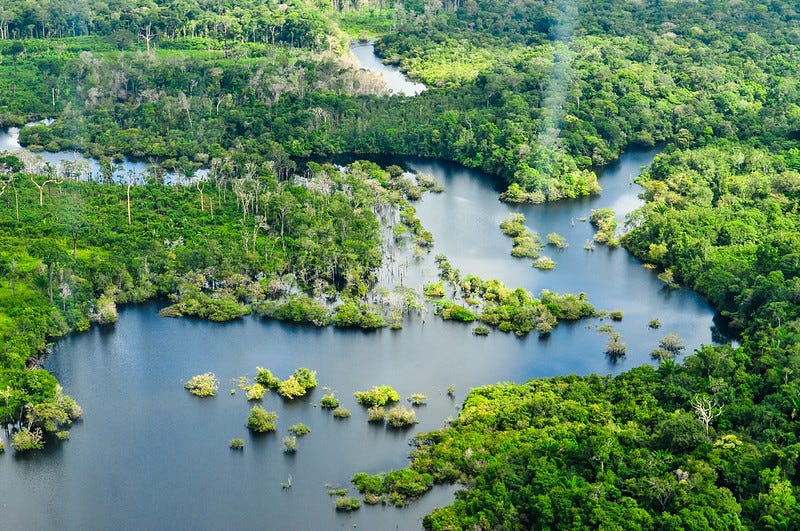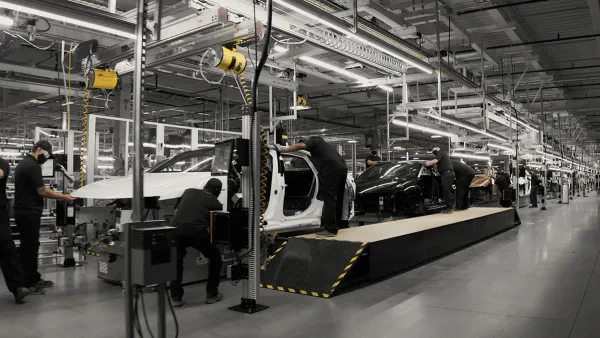Are you ready for the the new, global, climate-friendly currency?
Good Afternoon,
At some point we’re going to have to figure out how to start paying to remove all the carbon we’ve put in our atmosphere. Today I talk a bit about how that might be done – through a new currency.
-Mike

For decades there’s been this idea of a triple bottom line in business. The first bottom line being financial, of course, the second being social responsibility, and the third being environmental. When the idea was coined in the 1990’s, it was broadly considered a soft way for companies to claim increased social and environmental responsibility. The general criticism of triple bottom lines was (and is) that while there’s no evading the impact of a bad financial bottom line, your company will generally do just fine if the social and environmental bottom lines are ignored.
That’s not to say the spirit of triple bottom lines is bad. There are still plenty of companies trying to do it as “B-Corps”, a special kind of legal organization some states have where, instead of being an LLC or a C-Corporation, they focus on “benefits” to their community and make less profit because they are donating some portion of revenue to good causes. Some states require a percentage of revenue to go to contributions to qualify as a B-Corp, others do not.
Still though, what all of this is trying to get to is the idea of wrapping non-financial externalities into the cost of doing business. B-Corps and the triple bottom line are meant to be open declarations that a company is not just focusing on money but also on other aspects of their community they believe they’re responsible for that can’t necessarily be measured in cold, hard cash.
And yet, because we live in a totally capitalistic system where “money talks”, whether or not a company is an ongoing concern, or whether or not you get to use profits to buy nice things, depends on the financial success of the company. Externalities, even if you choose to spend some extra profit on them, are external to your operations, and company leaders are really just making a choice to include them or not. They’re external. Period.
As I wrote a little bit about Wednesday, this is the basic conundrum presented by carbon emissions. If I operate a taxi service, I need to make sure I can pay for the cars, drivers, and gasoline. The taxis pick people up, take them places, and I get paid. In the process, there’s a bit of wear on the cars, so that shows up as depreciation on my balance sheet. The drivers need to be paid for their work, so that’s wages. And then the cars need gasoline to move, that’s paid for at the pump.
But what about the CO2 that comes out of the cars’ tailpipes as they drive around? That just goes up in the air, and nobody really can see it. Scientists and engineers tell us that 19.37 pounds of CO2 are generated for every gallon of gasoline burned (don’t ask me how the CO2 weighs more than the gasoline, that chemistry is beyond me), but it’s really not my problem as a taxi company owner.
So, let’s put a dollar amount on that externality. Right now, carbon capture and sequestration (CCS) today costs about $350 per ton of CO2. Experts think they can get it down to $100 in short order, so let’s use that futuristic number. In that situation, extracting the carbon created by the gasoline would cost 5-cents per pound, so the roughly 20 pounds of carbon created by burning a gallon of gasoline would cost $1 to capture and sequester. Adding another $1 to a gallon of gas seems doable, right?
But then we’d need to add that carbon cost to our electricity, heating oil, and natural gas, and so on. The average American household burns about 77 million British Thermal Units, or BTUs. Averaging out the carbon output by fuel types, that means our homes – not counting a person’s car, train, and plane travel – are creating about 12,600 pounds of carbon a year, another $630 a year in carbon removal.
Things are starting to get expensive. Who’s really going to voluntarily end up paying for all that?
And here we return to the carbon externality problem: It’s external to our existing costs. Who’s going to pay for something unless they have to?
Put a pin in that question for a minute. There’s another problem to talk about: Even if people wanted to buy carbon capture and sequestration, where would you buy it? And since CO2 is invisible, odorless and impossible to measure in the atmosphere without special equipment, how do you know who is really capturing and trapping CO2, so you can pay them for the work they do?
Another problem: As I discussed in Wednesday’s newsletter, if we’re going to be capturing CO2 at a scale that matters, we’ll need millions of CCS facilities operating around the world. We’re going to be making a lot of carbon credits – and someone is going to have to monitor their validity.
What we’re really talking about here is the idea of creating a new, global, common currency, where some unit of carbon removal equals a credit. It wouldn’t replace existing financial currencies, we’d still have dollars, euros, and yen, but instead operate alongside existing financial currencies and be used to recognize the true cost of carbon emissions.
Already, carbon credits are traded on a limited basis on some exchanges to satisfy European limits on carbon emissions, as well as in Japan, and California. But these limited exchanges do not have fungible credits between each other, nor do they allow any kind of global exchange. For instance, if I capture carbon in Nevada, I can’t sell it in Europe. Also, the verification process for credit production is limited to a small group of participants. Right now, if I grow a new acre of jungle in the Amazon, then fence it off from development, I can’t convert that into a carbon credit for the California or European market.
If this carbon credit thing is going to work, somebody needs to determine what makes up a credit, how it can be verified, and how do we make sure it isn’t counterfeited.
The great news is that we have technology and systems to do all this. The market and systems for cryptocurrency proves that we can create digital certificates protected from duplication. But we also need to create a system of verifying the creation of carbon credits and an entity with global trust that can manage that system.
Individual countries have central banks to manage currency, and central banks have varying levels of trustworthiness. For instance, the Japanese, American, and European Central Banks are considered very trustworthy. But the Central Bank of The Congo does not enjoy high levels of respect, which is reflected in how few people around the world use the Congolese Franc.
And yet, people in Congo use their Franc because it is theirs. Most countries – and their people – are not exactly enthused to use other countries’ currencies because they don’t control them and who knows if their value will go up or down? Accusations of foreign currency manipulation are common. In 1997, East Asia experienced a series of currency crashes following extensive speculator pressure and manipulation of the currencies. Then the crash spread to Latin America and Eastern Europe.
While large economic powers are generally safe from currency manipulation, smaller countries have very realistic fears. Under these circumstances, creating and enforcing a global standard for carbon credits, essentially a new currency that all countries will have to agree to use, is a very tall order.
It’s possible that the U.S., Europe, or some other group of countries could decide to create a common carbon credit, and then use it internally. Maybe, as there is today, there could be different carbon credits around the world. But this is a headache for the biggest polluters, multinational energy companies who need to move credits across national borders, and it would shut out most of the developing world, which is actually home to the biggest natural carbon sinks, forests. These countries need a way to participate in developed country carbon credits so they can be incentivized to keep and enlarge their forests.
That means, to be successful, we need some sort of global body to pull it all together.
The one organization I can imagine pulling everyone together to agree on a common currency is the United Nations, in particular as part of the global climate change negotiations. It’s the one place where everyone in the world is at the table. There’s already an active discussion about how to solve problems related to climate change, and it would seem that carbon credits are directly related.
But as you can imagine, this is a huge diplomatic task. There are so many aspects that need to be agreed upon, and some group needs to be empowered to monitor the process, and then there need to be real, enforced penalties for those who counterfeit or somehow degrade carbon credits. Right now the problem hasn’t been a part of any negotiation agency. But at some point, the whole world needs to get on board.
Even if that happens, there’s still the issue of making people pay for the externality. To do that, every government in the world will have to begin monitoring carbon emissions by companies and individuals. Only then will people willingly pay that extra $1 a gallon of gas, or an extra $630 for heating and cooling their home.
Maybe I’m naive, but I believe in the power of institutions and that when faced with real problems, people can work together collectively. It seems to me that some time soon, we’re going to be creating a new global currency so we can trade carbon credits.
Other Things Happened
- Bloomberg research estimates $2.56 trillion was invested in clean energy transition last year.
- The Canadian provincial capital of Yellowknife is undergoing full evacuation to escape raging wildfires.
- A new study found that 40% of total U.S. emissions came from the highest earning 10% of households.
And here is your end of the newsletter reward: Check out Daily Dose of Internet. Strong recommend.
Thank you for reading Heat Rising. This post is public so feel free to share it.





